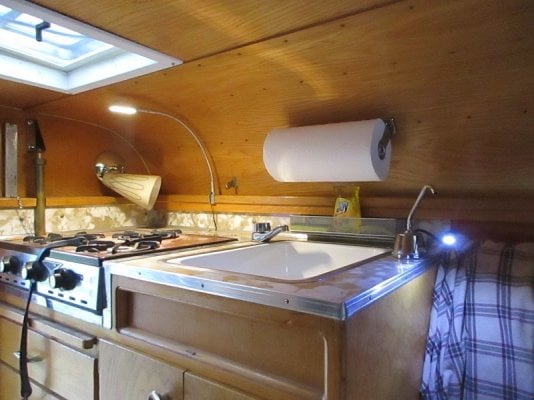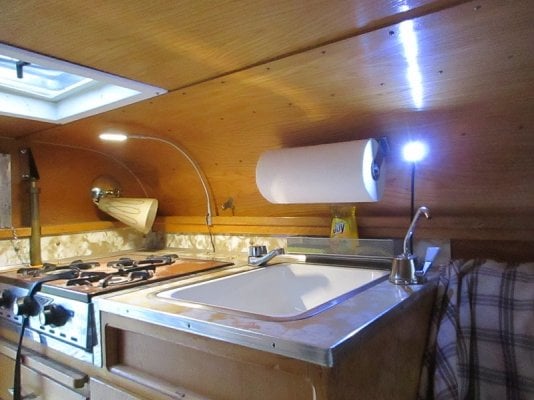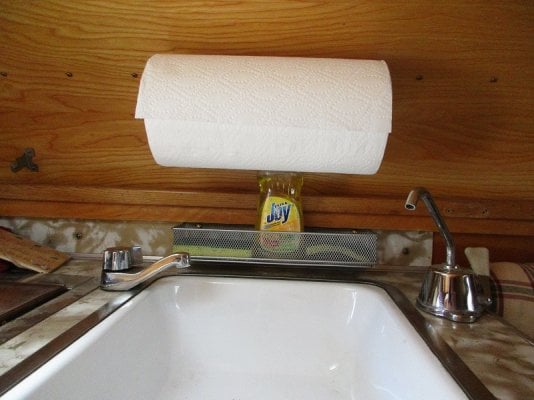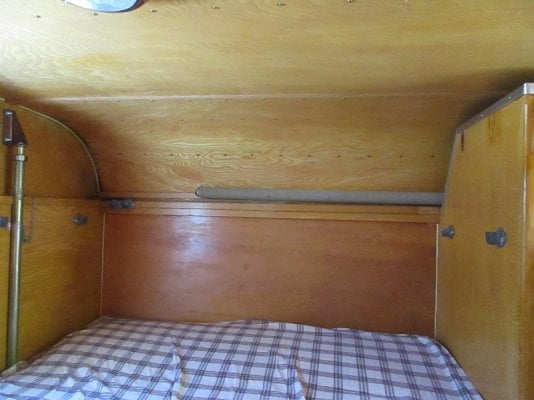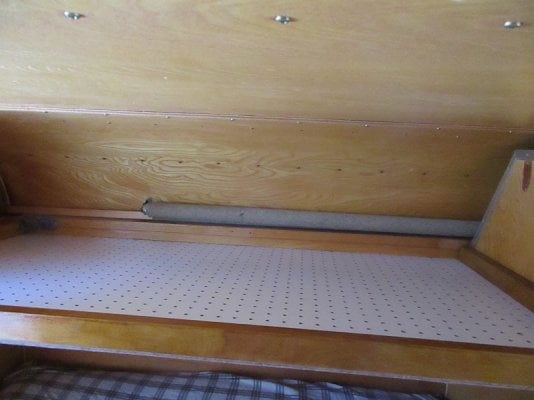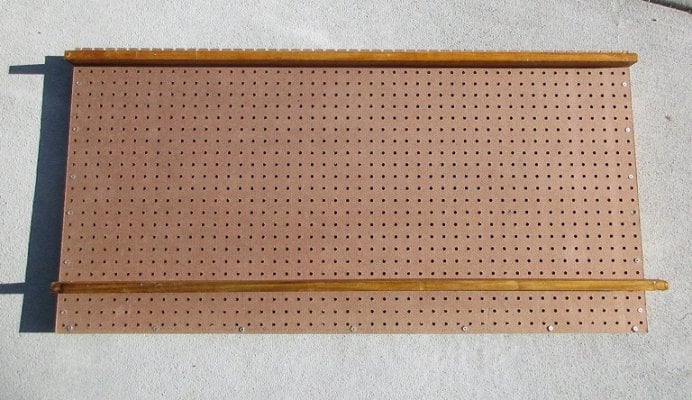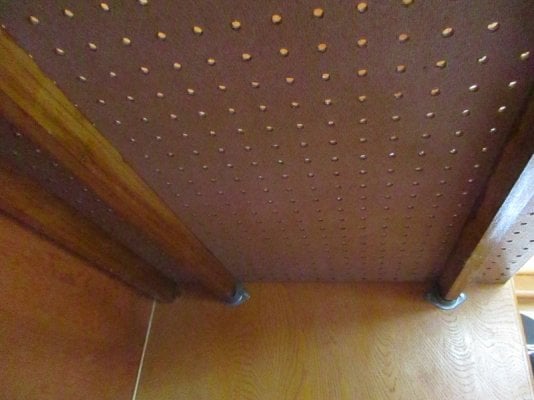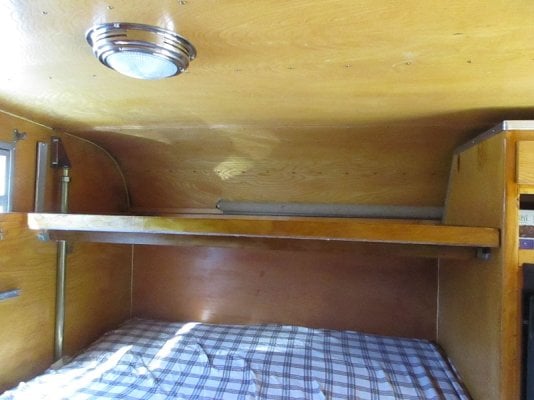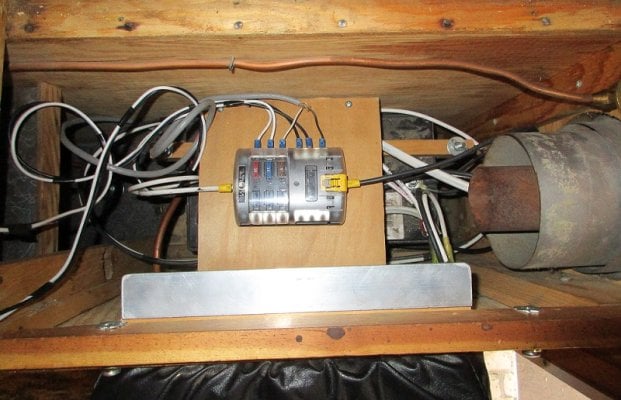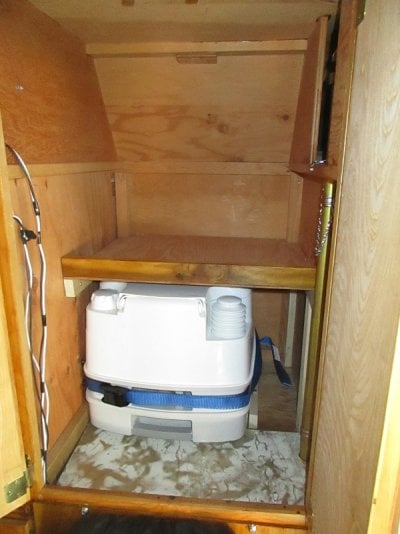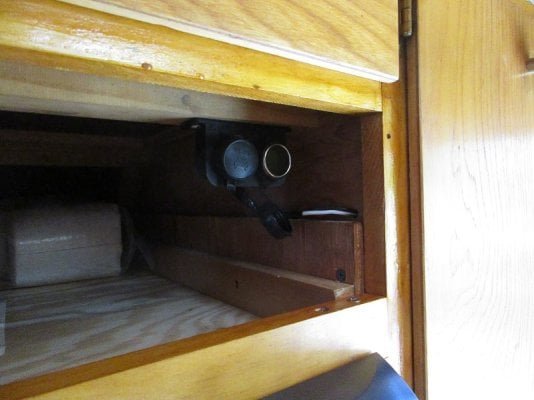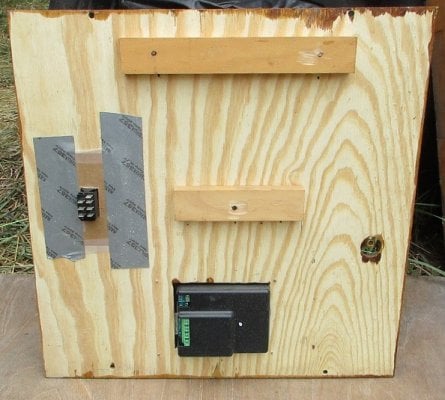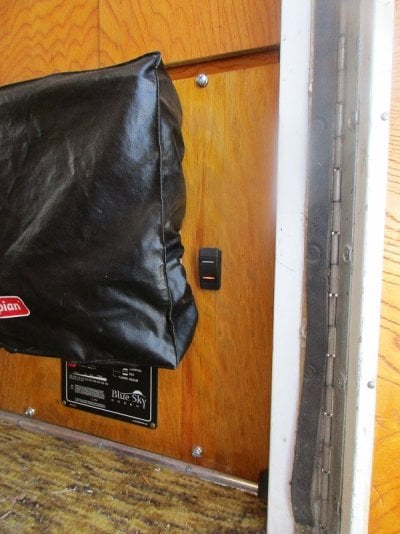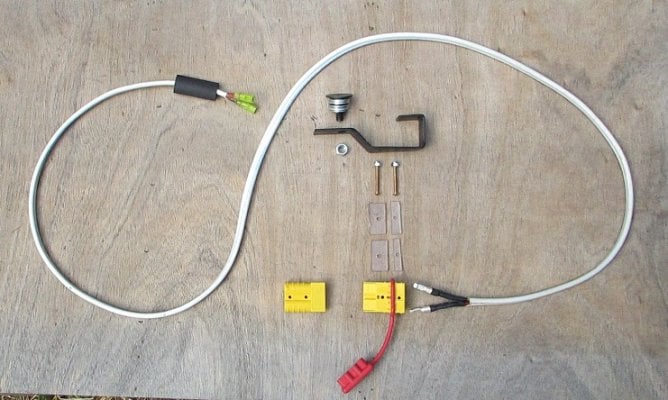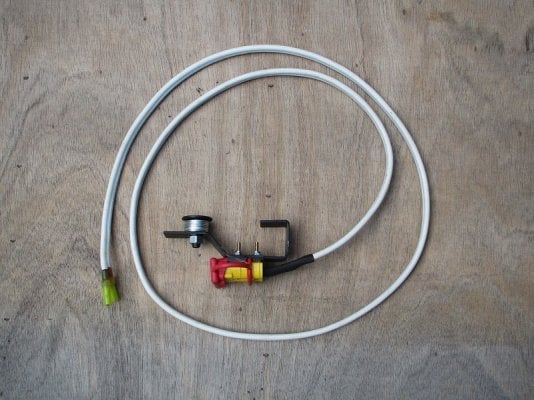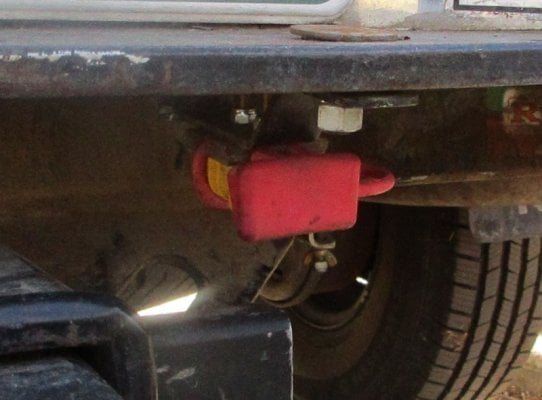Denver Alaskan
Advanced Member
- Joined
- Sep 27, 2013
- Messages
- 86
In Fall 2016 I made additional improvements to my 1966 8 foot long Non-Cab Over (NCO) Alaskan camper. The improvements made in 2015 are covered in this older thread:
http://www.wanderthewest.com/forum/topic/11452-engel-12-volt-refrigerator-in-1966-8-nco/
The new 2016 improvements are, clockwise from the kitchen galley:
(1) Two new flexible shaft LED lamps on the galley countertop.
(2) Basket and towel holder above sink.
(3) A 2’ x 4’ pegboard shelf over the foot of my front crossways bed.
(4) A new 12 volt fuse box for all interior 12 volt circuits.
(5) A porta-pottie and a smaller shelf in the large closet.
(6) A solar heated shower bag for use outdoors; and
(7) A double pole – double throw (DPDT) illuminated rocker switch to direct the output amperage from my two 100 watt solar panels to either the solar charge controller in my Alaskan to charge it’s AGM battery, or to a new solar charge controller in my (occasionally towed) 1953 Airstream 21’ Flying Cloud travel trailer to charge its AGM battery.
Each 2016 improvement will be described separately in this thread.
http://www.wanderthewest.com/forum/topic/11452-engel-12-volt-refrigerator-in-1966-8-nco/
The new 2016 improvements are, clockwise from the kitchen galley:
(1) Two new flexible shaft LED lamps on the galley countertop.
(2) Basket and towel holder above sink.
(3) A 2’ x 4’ pegboard shelf over the foot of my front crossways bed.
(4) A new 12 volt fuse box for all interior 12 volt circuits.
(5) A porta-pottie and a smaller shelf in the large closet.
(6) A solar heated shower bag for use outdoors; and
(7) A double pole – double throw (DPDT) illuminated rocker switch to direct the output amperage from my two 100 watt solar panels to either the solar charge controller in my Alaskan to charge it’s AGM battery, or to a new solar charge controller in my (occasionally towed) 1953 Airstream 21’ Flying Cloud travel trailer to charge its AGM battery.
Each 2016 improvement will be described separately in this thread.

